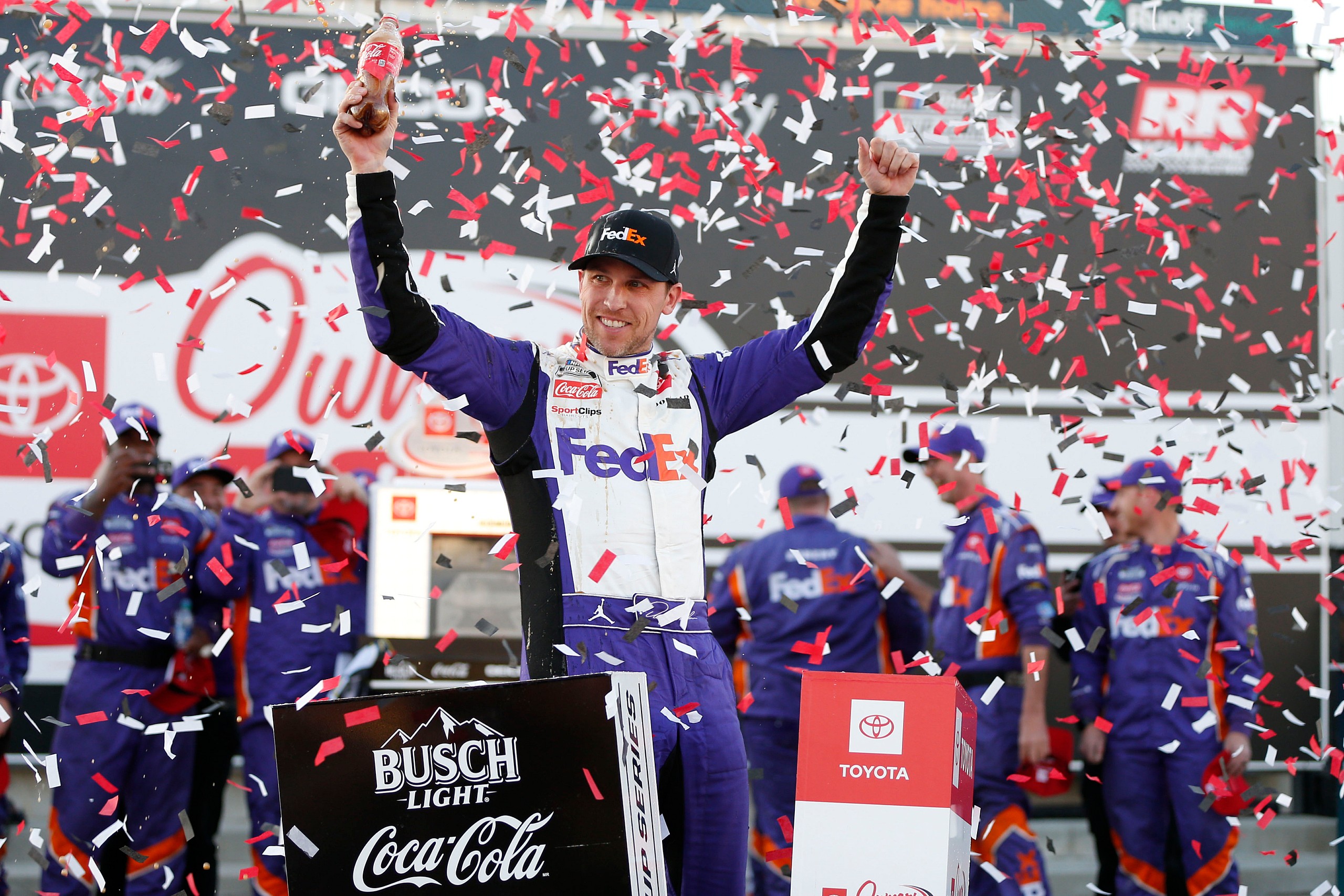
Pit stops are very important in a NASCAR race. And they can single-handedly determine the result of a race. In the teams’ attempts to outwit the competition, some pit stop calls have been legendary and influenced the outcome and created some iconic moments. Here are some of the best NASCAR pit stop strategies of all time.
The Pit Stop Choreography Innovation

Modern pit-stop choreographies are an art form. The teams are always trying to come up with new ideas on how to gain several valuable seconds. For example, Joe Gibbs Racing introduced a new system in 2022 that involved the rear tire changer moving to the front of the car to change the right-rear tire.
This approach was very useful in Denny Hamlin’s win at Richmond because it showed that minor adjustments in the management of the pit stop can lead to significant gains on the track.
Also Read: NASCAR schedule: Races today, races this weekend, NASCAR starting lineup for Sunday
The No-Pit Gamble

Now and then, teams decide to take the risk of not coming in to change tires late in a race. The strategy can prove to be effective in tracks where position is more important than tire degradation. For instance, in the 2012 Bristol Night Race, Brad Keselowski’s team chose to remain on track with old tires during a late-race caution period. This enabled Keselowski to keep the lead despite being pursued by other drivers with new tires. He managed to win the race.
The Two-Tire Stop

Choosing to change only two tires and not four can be a masterstroke, particularly in the last few laps. This strategy reduces the time that a driver spends in the pits. So this means the driver can gain position on the track. A great example was the 2009 Samsung 500 at Texas Motor Speedway.
Jeff Gordon’s crew chief chose a two-tire strategy which enabled him to overtake his rivals and claim the chequered flag. It showed how a timely two-tire strategy can be the key to winning a race.
The Short-Pitting Technique

Short-pitting is another strategy that teams use where they pit sooner than their rivals. If done properly, can prove to be very beneficial. This strategy was applied by Ken Harvick’s team in the 2019 Brickyard 400 race to the best effect.
Harvick took a short green flag pit stop which enabled him to come out ahead of the rest of the pack when they all pitted. This move allowed him to get the track position that he needed to win one of the biggest races in the entire NASCAR schedule.
Also Read: Daniel Suarez to Remain at Trackhouse in 2025
Fuel Mileage Strategy

While fuel mileage races are not as frequent nowadays, they gave some of the most exciting finishes in NASCAR history. For instance, how Dale Earnhardt Jr. won the 2008 Michigan race. Earnhardt made his tank last as long as he could, which gave him his first victory in two years.
On the flip side, this can prove costly as it did in the 2011 Coca-Cola 600 when Dale Earnhardt Jr. ran out of fuel in the final lap of the race, handing the win to Kevin Harvick.
Related: 7 most dramatic changes in NASCAR rules of all-time
The Splash and Go Strategy

The “splash and go” is a tactic in which teams choose to take minimal fuel, skipping tire changes to save time. This is quite a bold strategy but has proved quite successful in many races. A memorable one was the 1992 Hooters 500 at Atlanta in which Alan Kulwicki used a splash and went on to clinch the championship by leading the most laps.
This high-risk move enabled Kulwicki to cross the finish line with the required amount of fuel and beat Bill Elliott by 10 points to clinch the championship.